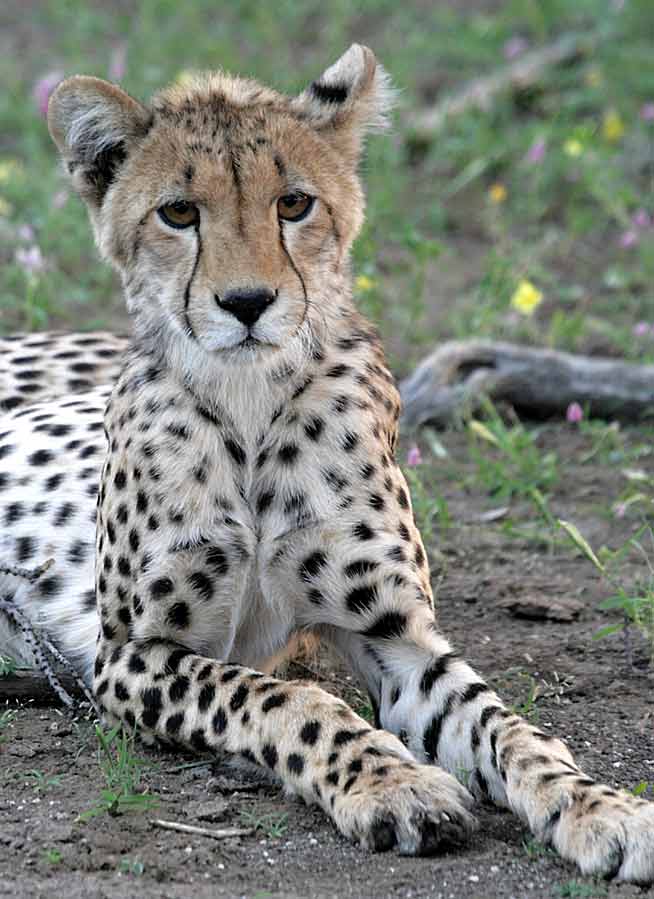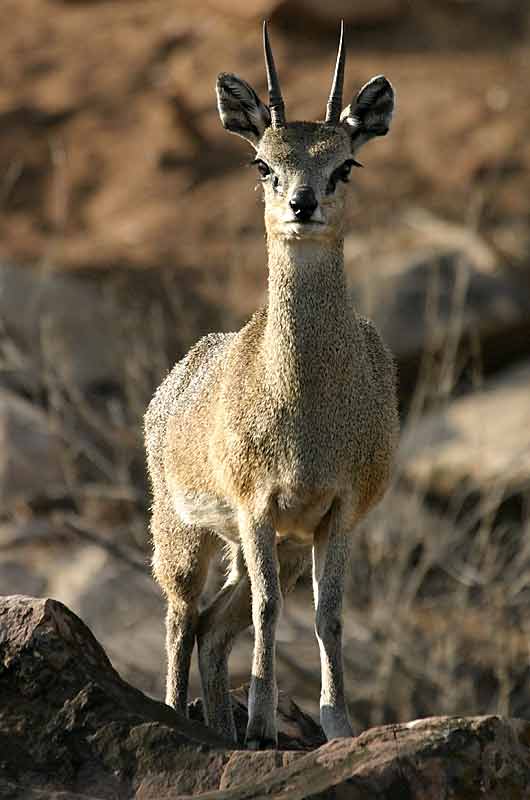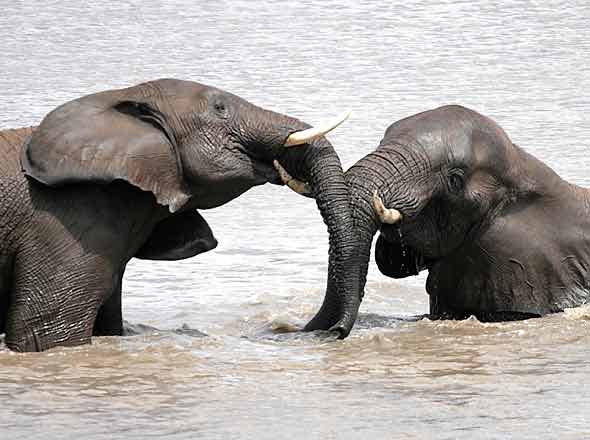Scotch Macaskill's Wildlife Blog
IMPORTANT: Please note that from April 2009 this Blog's Web address changed as a result of a switch in the blogging platform we use. It's still an integral part of the Wildlife Pictures Online website and, we hope, will continue providing entertaining and enjoyable content in the form of wildlife images, news, views and information.
For the most recent posts, links, and other resources, please visit the new Wldlife Photography Blog.
|
Today's Picture: Portrait of a Young Cheetah
June 1, 2008
|

Photo Details: Close up of a young cheetah (Acinonyx jubatus) lying on its belly with head raised and front legs outstretched, Mashatu Game Reserve, Tuli Block, Botswana.
Camera: Canon EOS 400D; Lens: Canon 100-400 IS Zoom; Focal Length: 320mm; Shutter speed: 1/50; Aperture: f5.6; ISO: 800.
|
Today's Picture: Klipspringer
June 10, 2008
|

Photo Details: Male klipspringer (Oreotragus oreotragus) posing on rocky hillside, Mashatu Game Reserve, Tuli Block,
Botswana.
Camera: Canon EOS Digital Rebel (300D); Lens: Canon 100-400 IS Zoom; Focal Length: 400mm; Shutter speed: 1/2000;
Aperture: f5.6; ISO: 800.
Additional Info: The klipspringer (literal translation: "stone or rock jumper") is a small antelope (shoulder height about 60cm; weight
10 to 14kg) that lives on rocky outcrops and kopjes. This habitat restricts its distribution, so you're unlikely to see klipspringers in open grassland
or savannah. In their chosen habitat, klipspringers are incredibly agile, with flat-tipped hoofs that allow them to bound up and down steep slopes
and jump from rock to rock.
As can be seen from the picture above, the coat is coarse and consists of hollow, spiny bristles that provide insulation against extremes of
temperature. Klipspringer commonly occur in pairs and form lifelong bonds. In southern Africa only the males carry the short, straight horns
although in Tanzania both males and females have horns.
|
Today's Picture: Elephant Communication
June 23, 2008
|
Did you know that African elephants live in a "fluid fission-fusion" society? I didn't, until I read an interesting paper about
Social Behaviour and Communication in Elephants.
In the paper, Dundee University student Rachael Adams explains that a fluid fission-fusion sociey means simply that elephant family units are constantly being divided and reunited whilst, at the same time, the elephants are meeting different individuals on a daily basis. This requires advanced social organisation and high levels of communication.
 Communication is an essential aspect of social behaviour in elephants and this is achieved by the efficient use of all their senses, including tactile communication where they use their trunks, as in the picture above, taken in the Kruger National Park, South Africa.
Communication is an essential aspect of social behaviour in elephants and this is achieved by the efficient use of all their senses, including tactile communication where they use their trunks, as in the picture above, taken in the Kruger National Park, South Africa.
If you're interested in animal behavior or fascinated by tales of elephant intelligence, the paper is well worth reading, even though it is academic in nature and was presented as university coursework.
.... read more
|
Video of Elephants Trumpeting, Growling & Rumbling
June 24, 2008
|
Although elephants are renowned for their ability to move silently through the bush, they can also be very noisy, specially when they're having a domestic argument.
While in Botswana's Tuli Block, an area that is home to hundreds of elephants, including large family groups, I shot some video of elephants communicating, mainly to record the sounds they make. Please go direct to YouTube to view the video (opens in new browser window).
The first portion shows an elephant group, clearly agitated about something, vocalising their feelings in no uncertain terms.. Then there're a few frames at the end of an ele obviously irritated by our presence.
Elephants make a wide range of sounds, including growls, trumpets, squeals, skrieks and low frequency vocalisations.
Growling and rumbling are the most common and are used as a
means of communication between individuals and families but can also be used in an
aggressive tone between females and calves as a disciplinary measure. See Social Behaviour and Communication in Elephants to find out more.
|
| |
| Back to top of page
|
|
Previous Entries
By Month
By Category
My Original Blog
2005 Entries
2004 Entries
2003 Entries
Who Am I?
Brief Bio
|
| Back to Wildlife Blog Home Page

Home /
Blog /
About /
Contact
Contact Details: Scotch Macaskill, Dirt Road Traders, Currys Post Road, Howick, KwaZulu-Natal,
South Africa. Tel: +27 (0)82 578 2329. Privacy: Your privacy is guaranteed.
See our Privacy Policy for more. This site accepts advertising and other forms of compensation - see
Disclosure and Advertising for details.
Site updated: 2019. Copyright © 2002 - 2019 Scotch Macaskill
|



 Communication is an essential aspect of social behaviour in elephants and this is achieved by the efficient use of all their senses, including tactile communication where they use their trunks, as in the picture above, taken in the Kruger National Park, South Africa.
Communication is an essential aspect of social behaviour in elephants and this is achieved by the efficient use of all their senses, including tactile communication where they use their trunks, as in the picture above, taken in the Kruger National Park, South Africa.